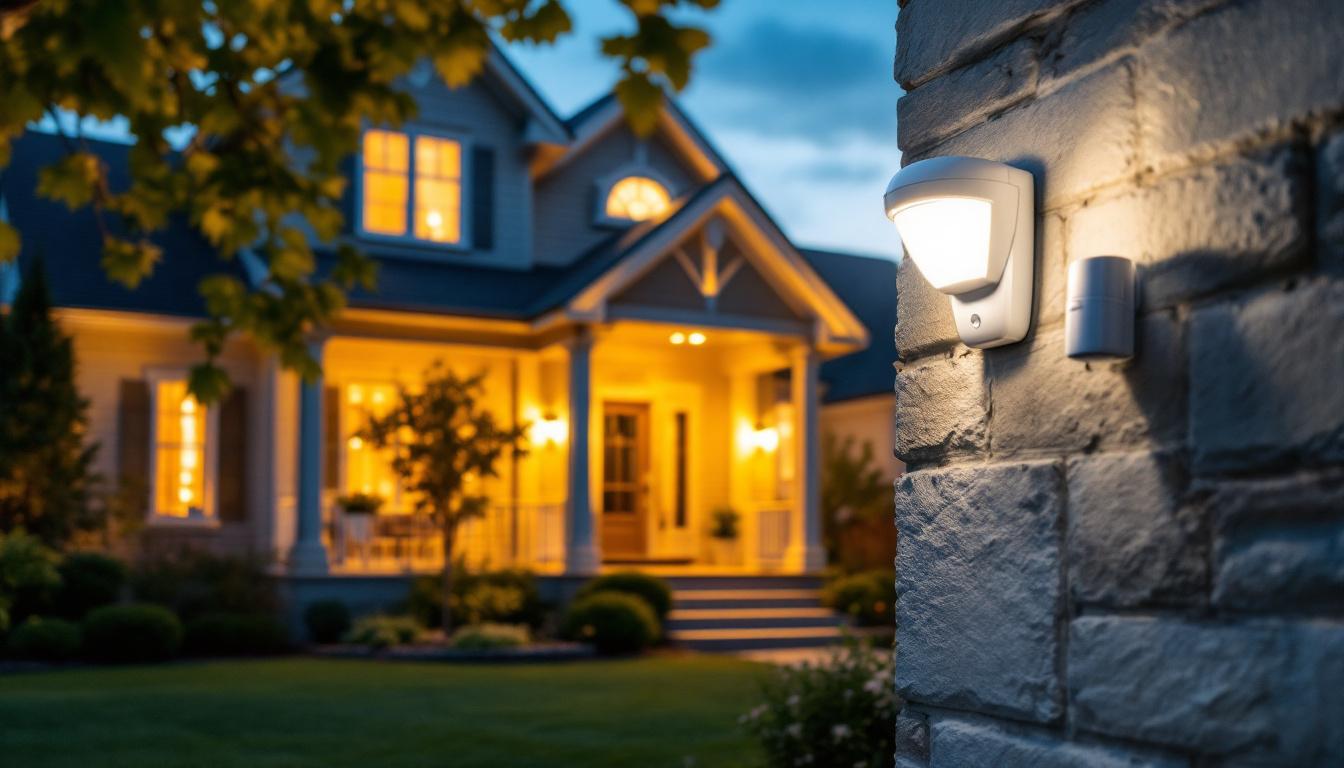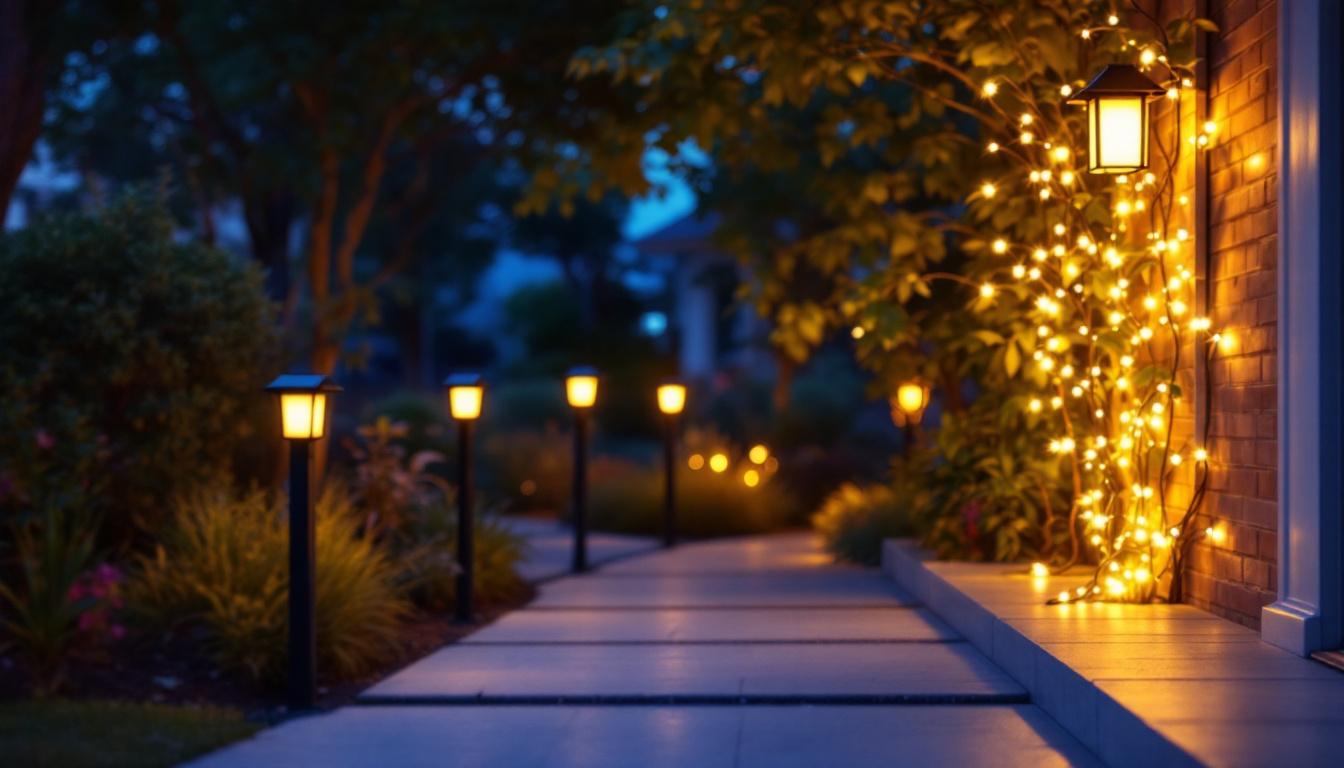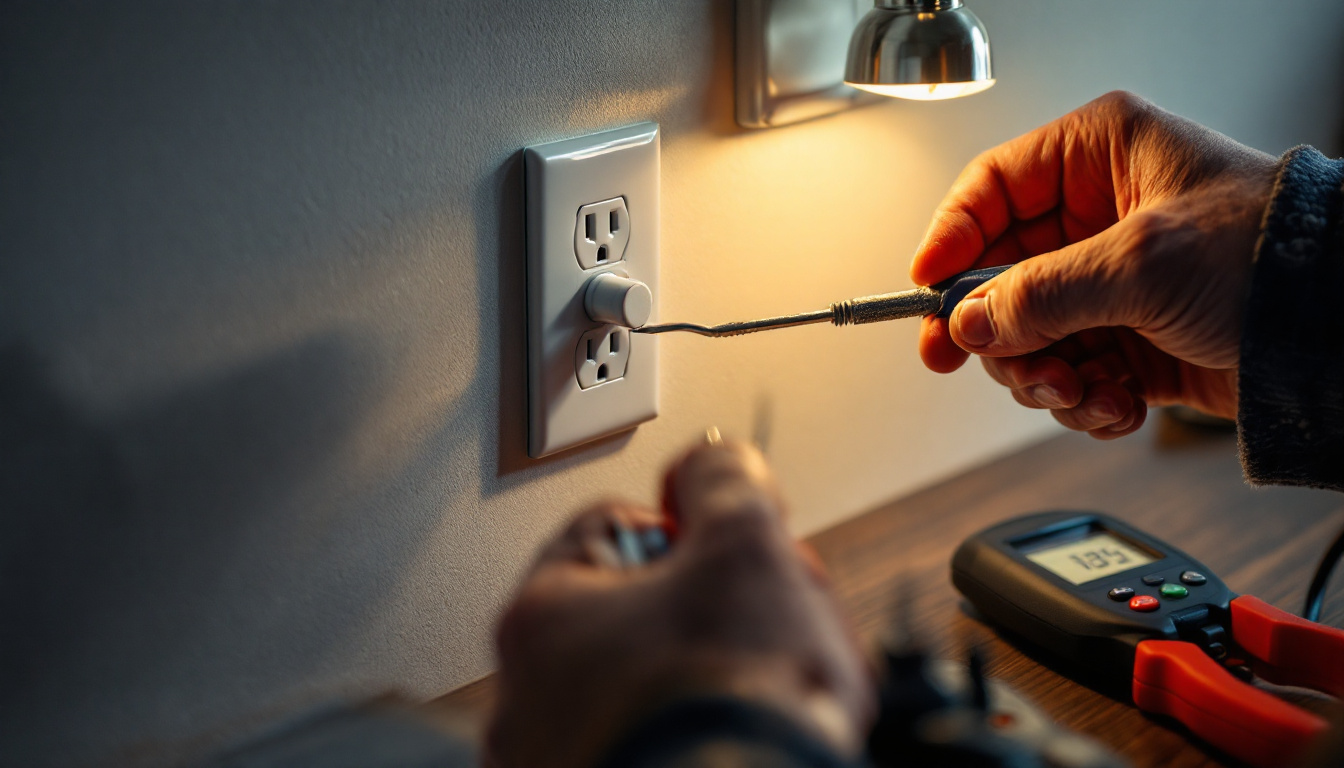
In the realm of outdoor lighting, the integration of motion sensors has emerged as a transformative trend. For lighting contractors, understanding and leveraging this technology can set them apart in a competitive market. Motion sensors not only enhance security but also improve energy efficiency and convenience, making them a valuable addition to any outdoor lighting project.
As urban landscapes evolve and homeowners seek smarter solutions, the demand for motion-activated outdoor lighting continues to rise. This article delves into the advantages of motion sensors, their applications, and how they can benefit lighting contractors in their projects.
One of the primary advantages of motion sensors is their ability to significantly reduce energy consumption. Traditional outdoor lighting systems often operate on a timer or remain illuminated throughout the night, leading to unnecessary energy waste. In contrast, motion sensors activate lights only when movement is detected, ensuring that illumination is provided only when needed. This not only lowers electricity bills for homeowners but also contributes to a more sustainable environment by reducing the carbon footprint associated with excessive energy use.
Moreover, the versatility of motion sensors allows for a variety of applications beyond mere security. For instance, they can be integrated into landscape lighting to create dynamic outdoor spaces that respond to human presence. This capability enhances the aesthetic appeal of gardens and pathways, making them more inviting and functional. Additionally, advanced motion sensors can be programmed to adjust lighting levels based on the time of day or ambient light conditions, offering a tailored lighting experience that adapts to the user’s needs. Such innovations not only improve the overall user experience but also position lighting contractors as forward-thinking professionals who embrace cutting-edge technology.
Motion sensors are devices that detect movement within a specified area and trigger a response, typically by turning on lights. They come in various types, each with unique features and functionalities. Understanding these types is crucial for lighting contractors aiming to provide tailored solutions for their clients.
There are primarily three types of motion sensors used in outdoor lighting: passive infrared (PIR), microwave, and dual-tech sensors. Each type has its strengths and weaknesses, making them suitable for different applications.
PIR sensors are the most common, detecting heat emitted by objects in their field of view. They are cost-effective and efficient for areas with clear line-of-sight. Microwave sensors, on the other hand, emit microwave pulses and can detect movement through obstacles, making them ideal for complex outdoor environments. Dual-tech sensors combine both PIR and microwave technologies, offering enhanced reliability and reducing false triggers.
Motion sensors operate through various detection methods. PIR sensors, for instance, measure changes in infrared radiation, while microwave sensors track the reflection of emitted waves. When movement is detected, the sensor sends a signal to activate the connected lighting system.
This technology can be integrated into various outdoor lighting fixtures, allowing for seamless operation. The ability to customize settings, such as sensitivity and duration of illumination, further enhances the user experience.
In addition to their primary function of detecting motion, modern motion sensors can also be equipped with advanced features such as dimming capabilities and smart connectivity. For example, some sensors can communicate with home automation systems, allowing users to control their outdoor lighting remotely via smartphone apps. This integration not only increases convenience but also enhances energy efficiency, as lights can be programmed to turn off when not needed or adjust brightness based on ambient light conditions.
Furthermore, the placement of motion sensors plays a critical role in their effectiveness. Proper positioning can significantly reduce the chances of false alarms caused by small animals or environmental factors like wind. For optimal performance, contractors should consider factors such as the sensor’s detection range, the layout of the area, and potential obstructions. By strategically placing these devices, it is possible to create a responsive lighting system that not only enhances security but also improves the overall ambiance of outdoor spaces.
Incorporating motion sensors into outdoor lighting solutions offers numerous benefits for lighting contractors. These advantages not only enhance the functionality of lighting systems but also improve client satisfaction and project outcomes.
One of the primary advantages of motion sensors is the added security they provide. Homeowners are increasingly concerned about safety, and outdoor lighting plays a crucial role in deterring intruders. Motion-activated lights illuminate dark areas when movement is detected, making properties less appealing targets for potential burglars.
By installing motion sensors, lighting contractors can offer clients a proactive approach to home security. This feature can be particularly appealing in residential neighborhoods where safety is a top priority.
Energy efficiency is a growing concern for many homeowners, and motion sensors contribute significantly to reducing energy consumption. Traditional outdoor lighting systems often remain on throughout the night, leading to unnecessary energy use. In contrast, motion sensors ensure lights are only activated when needed.
This not only lowers electricity bills but also extends the lifespan of lighting fixtures. By promoting energy-efficient solutions, lighting contractors can position themselves as environmentally conscious professionals, appealing to a broader client base.
Motion sensors offer unparalleled convenience for homeowners. With the ability to automate outdoor lighting, clients no longer have to worry about manually turning lights on or off. This automation is particularly beneficial for pathways, driveways, and entryways, where visibility is crucial.
Moreover, many modern motion sensors come with customizable settings, allowing homeowners to adjust sensitivity, duration, and even the time of day when lights activate. This level of customization enhances user satisfaction and can be a selling point for lighting contractors.
The versatility of motion sensors allows them to be used in various outdoor lighting applications. Understanding these applications can help lighting contractors tailor their services to meet client needs effectively.
In residential settings, motion sensors are commonly used for security lighting around homes, garages, and gardens. They can be installed on porch lights, floodlights, and pathway lights, providing homeowners with peace of mind.
Additionally, motion sensors can enhance the ambiance of outdoor living spaces. For example, they can be integrated into patio lights, automatically illuminating the area when someone approaches, creating a welcoming atmosphere for guests.
For commercial properties, motion sensors play a vital role in enhancing safety and security. Retail stores, parking lots, and office buildings can benefit from motion-activated lighting, which not only deters crime but also improves visibility for employees and customers.
Furthermore, businesses can save on energy costs by utilizing motion sensors in outdoor signage and display lighting, ensuring that lights are only on when necessary. This approach aligns with corporate sustainability goals, making it an attractive option for businesses looking to enhance their green initiatives.
Motion sensors are increasingly being adopted in public spaces and municipal lighting projects. Parks, sidewalks, and public buildings can utilize this technology to enhance safety and reduce energy costs. For instance, motion-activated lights in parks can illuminate pathways when pedestrians are present, improving safety during nighttime hours.
Municipalities can also benefit from the cost savings associated with reduced energy consumption. By investing in motion sensor technology, cities can allocate resources more effectively, ensuring that public funds are used to enhance community safety and well-being.
While the benefits of motion sensors are significant, lighting contractors must also be aware of potential challenges and considerations when integrating this technology into their projects.
The installation of motion sensors requires careful planning and consideration of the specific environment. Factors such as the layout of the area, potential obstructions, and the type of sensor chosen can all impact performance.
Additionally, maintenance is essential to ensure the longevity and effectiveness of motion sensors. Regular checks and adjustments may be necessary to account for changes in the environment, such as foliage growth or structural changes that could obstruct the sensor’s field of view.
False triggers can be a common issue with motion sensors, leading to unnecessary light activation. Factors such as pets, wildlife, or passing vehicles can cause lights to turn on unexpectedly. Lighting contractors must carefully select the appropriate sensor type and adjust sensitivity settings to minimize these occurrences.
The field of motion sensor technology is continually evolving, and staying updated on emerging trends can provide lighting contractors with a competitive edge. As technology advances, new features and capabilities are being integrated into motion sensors.
One of the most significant trends is the integration of motion sensors with smart home systems. Homeowners are increasingly looking for interconnected solutions that allow them to control various aspects of their homes through a single platform.
By incorporating motion sensors into smart home ecosystems, lighting contractors can offer clients enhanced control over their outdoor lighting. This integration allows for remote access, customizable settings, and even automation based on the homeowner’s preferences.
Advancements in sensor technology are also paving the way for more sophisticated motion sensors. Innovations such as enhanced detection algorithms and improved energy efficiency are making these devices more reliable and effective.
Moreover, the development of sensors that can differentiate between types of movement—such as humans, animals, or vehicles—can significantly reduce false triggers and enhance the overall user experience.
Motion sensors are undeniably a game-changer for lighting contractors, offering enhanced security, energy efficiency, and convenience for outdoor lighting solutions. By understanding the various types of motion sensors, their applications, and the benefits they provide, lighting contractors can position themselves as leaders in the industry.
As technology continues to evolve, staying informed about trends and advancements will be crucial for contractors looking to stay ahead of the curve. Embracing motion sensor technology not only enhances project outcomes but also contributes to a more sustainable and secure future for homeowners and businesses alike.
Ready to elevate your lighting projects with the latest in motion sensor technology? Look no further than LumenWholesale for all your outdoor lighting needs. We provide contractors with top-quality, spec-grade lighting products at unbeatable wholesale prices, ensuring you get the best value for your investment. Our extensive selection is designed to meet the highest industry standards, so you can deliver reliable, high-performance lighting solutions to your clients. Plus, with free shipping on bulk orders, you can enjoy premium lighting without hidden fees or compromises. Don’t miss out on the perfect blend of quality, affordability, and convenience. Visit LumenWholesale now and take advantage of our superior lighting products at the best prices!

Discover the common pitfalls lighting contractors face with commercial light fixtures and learn how to avoid them.

Discover essential tips from lighting contractors on choosing and installing solar night lights for your outdoor spaces.

Discover the indispensable role of duplex receptacles in modern lighting projects.

Explore the unique challenges lighting contractors face when installing turtle-friendly lighting solutions.